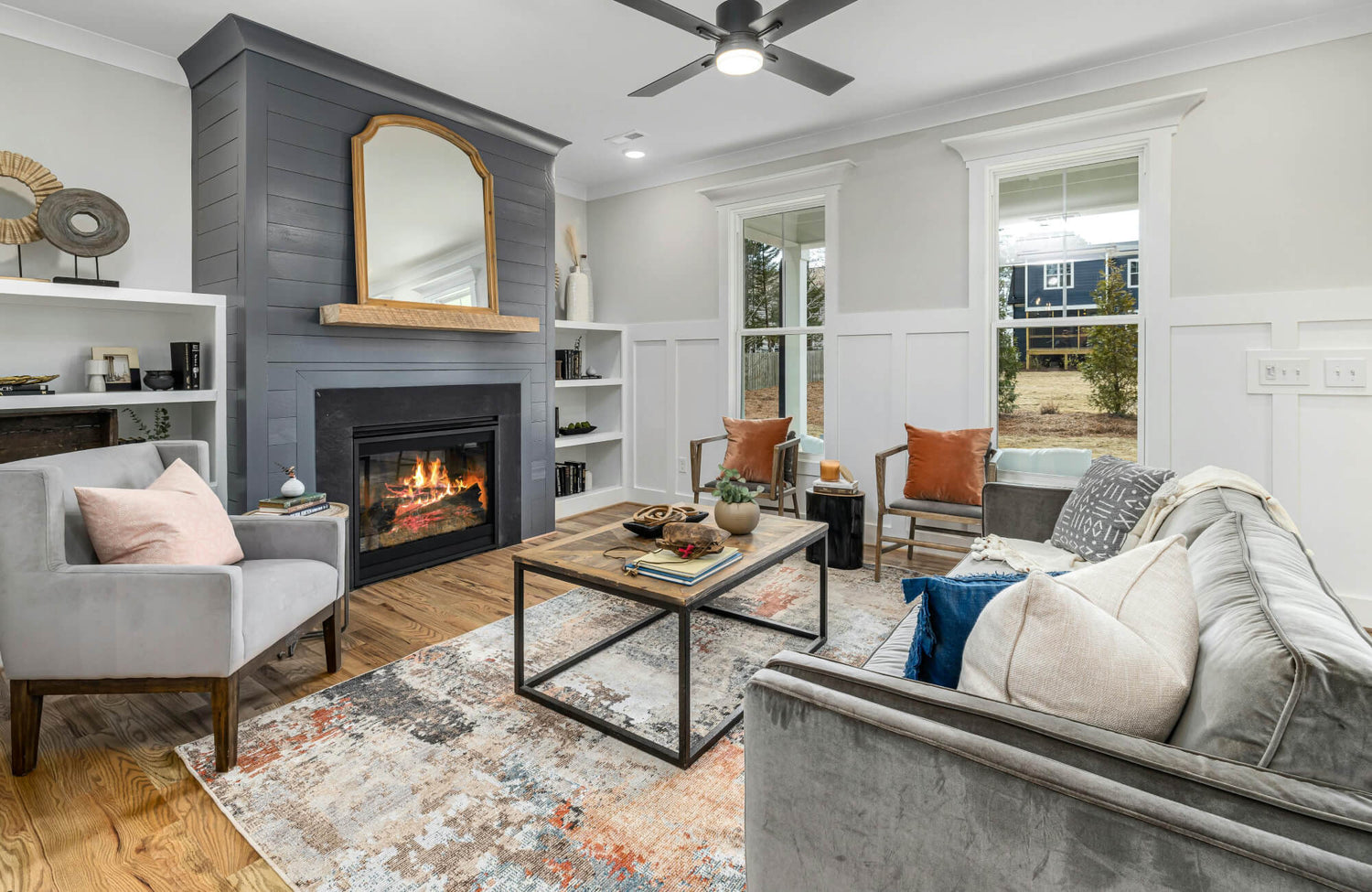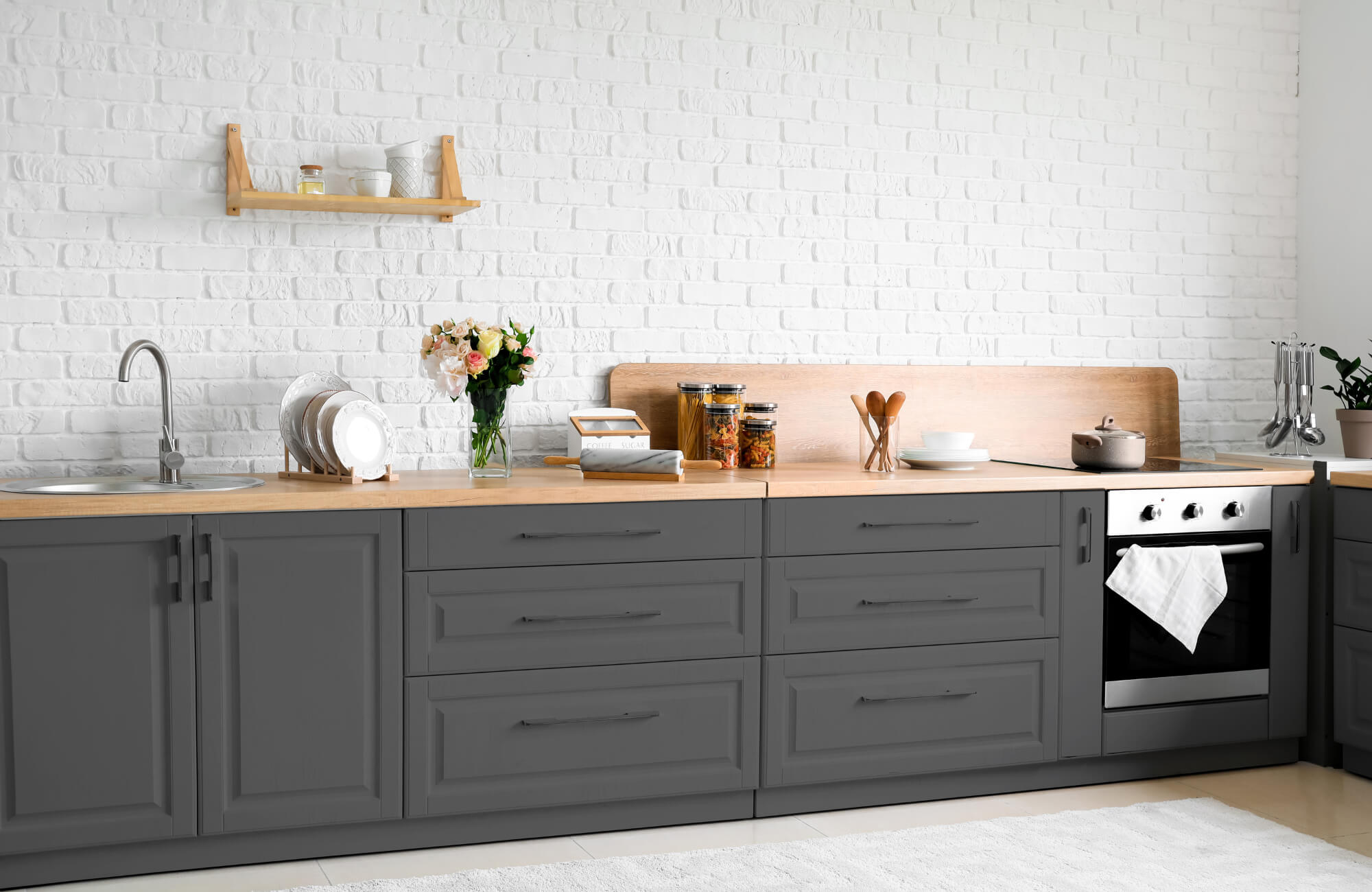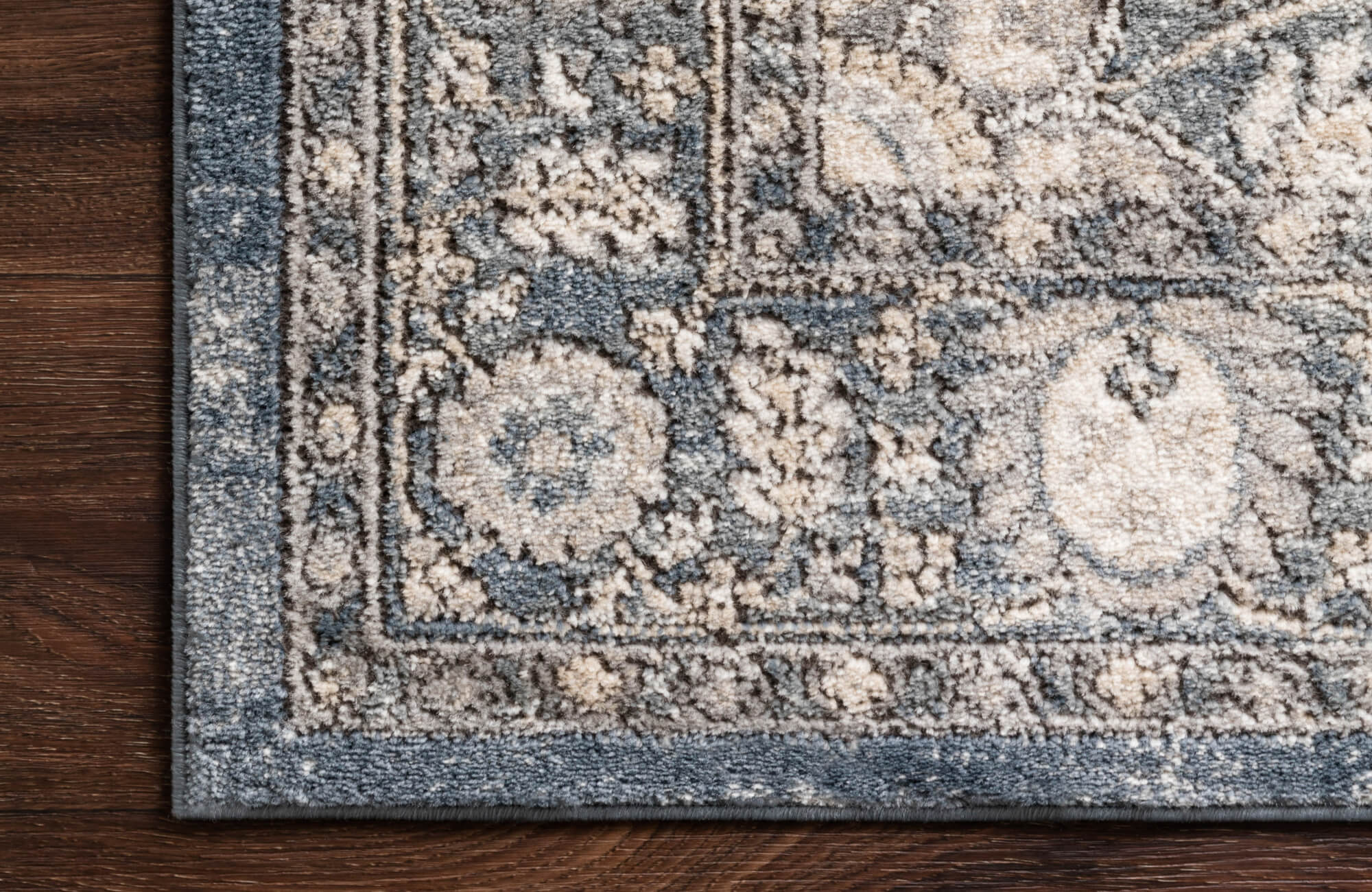Rug size plays a bigger role in interior design than many realize. The right size can ground a room and tie everything together, while the wrong one can throw off balance and disrupt the flow. Whether you're decorating a living room, bedroom, or entryway, choosing a rug that fits your space properly is key to creating a cohesive look.
In this guide, we’ll explore the key factors that influence rug sizing, including standard dimensions, layout, and shape. With the right approach, you can confidently select a rug that supports both the style and function of your space.
Exploring Rug Sizes
Before diving into placement tips, it’s helpful to get familiar with the standard rug sizes you’ll often see when shopping. Common dimensions like 5x8, 8x10, and 9x12 refer to the overall length and width of the rug in feet. While those numbers may seem straightforward, they can look very different depending on the size of the room and the amount of visible floor space around them. A 5x8 rug, for instance, might feel generous in a small apartment but appear undersized in a spacious living area.
Rug size also plays a key role in how balanced and grounded a space feels. Larger rugs tend to anchor furniture groupings and help define areas within an open layout, while smaller rugs can create a more segmented or floating effect. This is why scale matters; choosing a rug that’s too small can make the entire room feel disconnected, while a rug that’s too large might overwhelm the space. Understanding these visual impacts is essential when interpreting rug labels and matching them to your layout.
It’s also important to keep the room’s dimensions in mind when evaluating rug size. A rug that looks perfect online may feel cramped or awkward once it’s unrolled if the proportions aren’t right. You’ll want to consider how much floor space should be left around the rug and how it will interact with your furniture setup. This foundational knowledge will help you make confident decisions as we move into room-specific guidance in the next sections.

Factors to Consider When Selecting Rug Size
Before picking out a rug, it helps to first think about how the space functions. Is the rug meant to define a seating area, cover an open floor, or sit beneath a group of furniture? Each of these purposes will influence the size you should be looking for. A well-chosen rug, as seen above with our Hutchinson Polyester Face Rug in Burgundy / Denim, should feel intentional in the room; it should support how the space is used while visually tying everything together.
The dimensions and shape of the room itself also play a major role in determining the right rug size. Longer or narrower spaces may benefit from rectangular rugs that follow the natural flow of the room, while more square layouts give you flexibility with proportion. It's important to avoid selecting a rug based solely on what looks good in a showroom photo. What works in one layout may feel completely off in another, so taking accurate room measurements is a crucial first step.
Proportion is another key factor that’s often overlooked. A rug should complement the furniture around it without feeling too cramped or too loose. Ideally, there should be enough space for furniture legs to rest comfortably on the rug or at least align with its edges, depending on the layout you’re aiming for. Consistent spacing helps maintain a sense of balance in the room and keeps the rug from looking like an afterthought. These universal guidelines can create a strong foundation for selecting the right rug, no matter the room type.

Room-Specific Guidelines
Once you’ve considered the basics, it’s time to apply those principles to each room. Every space has its own functional needs, and the right rug size can help support those while adding structure and style.
Living Room
In the living room, the rug plays a central role in anchoring your seating area. A common approach, as seen with our Georgette Polyester Pile Rug in Desert / Multi above, is to place all furniture legs on the rug for a unified look, though placing just the front legs on the rug can work well in smaller spaces too. Either layout helps define the zone and gives the space a grounded, intentional feel. This is especially useful in open-concept rooms, where a well-placed rug can subtly create separation between living and dining areas. Common sizes for this space include 7x9, 8x10, 9x12, and 10x13, depending on your furniture arrangement and room dimensions.
Rugs in the living room can also help absorb sound and soften acoustics, especially in spaces with hard flooring and minimal fabric. Opting for a rug with a subtle texture or low pile can add visual interest without competing with your furniture. You can also layer rugs in this space to introduce color or pattern while keeping the foundation neutral.
Dining Room
For dining areas, the most important rule is to ensure that chairs stay on the rug even when pulled out. This keeps movement smooth and prevents awkward tipping on rug edges. Ideally, the rug should extend 24 to 30 inches beyond the table on all sides. Also, consider matching the rug shape to the table; rectangular rugs often work best with rectangular tables, while round tables pair well with round rugs for a cohesive look. Popular sizes for dining areas include 8x10, 9x12, and 10x14 to provide enough coverage around the table and chairs.
For households that entertain often, a low-pile rug is ideal in dining spaces since it's easier to clean and allows chairs to slide smoothly. A rug with a subtle pattern can also help disguise everyday crumbs or minor spills between cleanings. Consider using a rug pad underneath to prevent shifting and provide extra cushioning underfoot.
Bedroom
In the bedroom, rugs add softness and comfort while framing the bed as a focal point. For larger rugs, it’s best to place them under the lower two-thirds of the bed so they extend beyond the sides and foot of the bed. Alternatively, you can use smaller rugs or runners on each side to create balance without covering the entire floor. Rug sizing should also reflect bed size; for example, a queen bed typically pairs well with an 8x10 rug, while king beds often need at least a 9x12 or 10x14 to look properly scaled. In smaller bedrooms, 5x8 or 7x9 rugs can work well, too, especially when placed off-center or partially under the bed.
In addition to comfort, rugs in the bedroom can add a touch of warmth on chilly mornings, especially when placed where your feet land when getting out of bed. If your bed is positioned against a wall, a rug placed slightly off-center can still create visual balance without requiring full bed coverage. Coordinating the rug color with your bedding or curtains can also help pull the entire room together.
Hallways and Entryways
In narrow spaces like hallways or entryways, runners and small area rugs can provide both function and visual flow. These rugs help guide the eye through the space and add comfort underfoot. When choosing a runner, a great tip is to allow a few inches of bare floor along the edges for balance and to prevent the rug from feeling wall-to-wall. Sizes like 2x8, 3x8, 3x10, and even 3x12 are great choices for long or irregularly shaped hallways. For entryways, smaller options like 2x3, 3x4, or 4x6 can create a welcoming focal point without overwhelming the space.
Runners in hallways don’t just add function; they can also visually lengthen the space, especially when placed in lighter tones or linear patterns. For added safety, opt for a rug with a non-slip backing or use a rug pad to keep it securely in place. In entryways, a durable material like polyester or a stain-resistant blend is ideal to handle shoes, dirt, and moisture from outdoors.
Matching Rug Shape to Room Layout
The shape of a rug can have just as much impact as its size when it comes to creating balance in a room. Rectangular rugs are the most versatile and are often used to follow the natural flow of a space, especially in longer rooms or open layouts. Square rugs work best in symmetrical spaces where furniture or architectural elements are evenly distributed. They help maintain a sense of proportion and visual stability in rooms with equal-length walls or centered focal points.
Round rugs, on the other hand, are great for softening harsh angles or adding a bit of movement to more structured spaces. They work especially well in smaller rooms, reading nooks, or under round light fixtures to echo existing curves. Placing a round rug in an angular room can also help break up boxy lines and make the space feel more welcoming. Choosing a rug shape that mirrors or complements the layout of the room is an easy way to create a more cohesive and intentional design.
Pro Tips for Visual Harmony
Before committing to a rug, try using painter’s tape to outline its dimensions directly on the floor. This simple step helps you visualize how the rug will interact with your furniture and available space. It’s especially useful for checking clearances, walking paths and ensuring the rug doesn’t feel cramped or too dominant. Seeing the layout in full scale can often reveal whether a size or shape feels right before you make a purchase.
Another helpful tip is to maintain consistent floor space around the rug to create a sense of balance. In most cases, leaving around 12 to 18 inches of exposed flooring on each side of the rug helps define the area without making it feel closed in. This spacing also creates a visual buffer between the rug and the walls, which helps the entire room feel more grounded and intentional. It’s a small design move that can make a big difference in how polished the space looks.
Layering rugs is another way to add texture and interest without compromising flow. You can place a smaller, patterned rug over a larger base rug in neutral or warm tones, such as beige, ivory, or terracotta, to highlight a seating area or bring attention to a specific zone. This technique works well in both modern and eclectic interiors, offering flexibility and depth. Just make sure the layered look still feels balanced by aligning shapes and keeping edges clean.
Finding the Rug That Ties It All Together
Choosing the right rug size is about more than just filling empty floor space. It’s about creating balance, supporting the layout of your furniture, and enhancing the overall look and feel of your room. By paying attention to room dimensions, furniture placement, and proportion, you can avoid common mistakes and ensure your rug complements the space rather than competes with it.
Before you buy, take time to map it out, visualize your layout, and think about how the rug will function in your everyday routine. With a thoughtful approach, you’ll find a size and shape that not only fits your space but also brings it all together with comfort and style. If you need help choosing the right polyester rug size for your space, feel free to contact us! We're happy to guide you toward a comfortable, stylish, and long-lasting option that fits both your layout and lifestyle.










